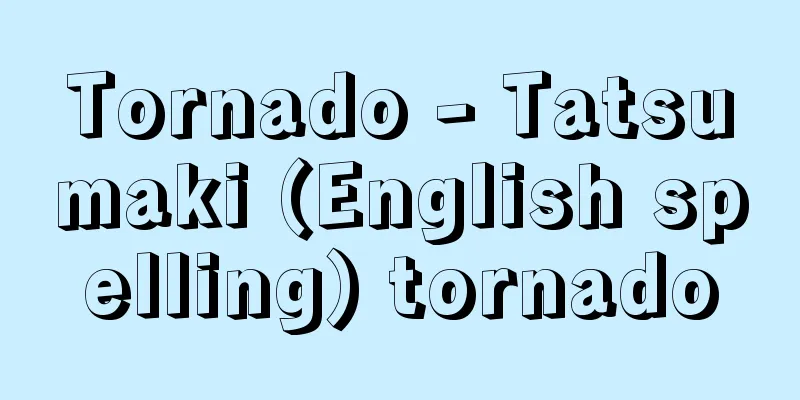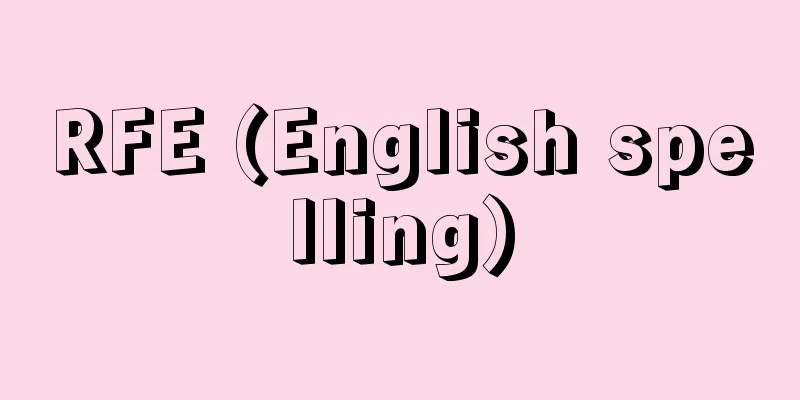Assault - assault

|
This refers to cases where the person who commits an assault does not injure another person, and is punishable by imprisonment for up to two years, a fine of up to 300,000 yen, detention, or a fine (Article 208 of the Penal Code). There are four types of "assault" in the Penal Code, including broad and narrow definitions, but the "assault" in this crime refers to the use of physical force against a person's body (assault in the narrow sense). The "assault" in this crime does not simply involve the use of physical force against a person, but it does not necessarily require contact with the person's body. Therefore, according to precedents, throwing stones at someone's feet or brandishing a drawn Japanese sword in a four-and-a-half-tatami room can also be considered assault. In addition, physical force, which is a means of assault, can also include strong light rays and radioactivity, but precedents recognize "assault by noise" and interpret the act of repeatedly hitting a large drum or gong nearby as a crime. Regarding the intent of assault, it goes without saying that an assault committed with the intent to assault falls under this category, but if an assault is committed with the intent to injure but does not result in injuring the victim, this would normally be considered attempted assault. However, since there is no provision for the crime of attempted assault under current law, this is handled as assault under Article 208 of the Penal Code. [Tetsuro Nawa] [Reference] |Source: Shogakukan Encyclopedia Nipponica About Encyclopedia Nipponica Information | Legend |
|
暴行を加えた者が、人を傷害するに至らない場合をいい、2年以下の懲役もしくは30万円以下の罰金または拘留もしくは科料に処せられる(刑法208条)。刑法上の「暴行」の概念には広義・狭義等4種類あるが、本罪の「暴行」は、人の身体に向けられた有形力(物理力)の行使をいう(狭義の暴行)。本罪の「暴行」は、単に人に対して有形力を行使するだけでは足りないが、かならずしも人の身体に接触することを要しない。したがって、判例によれは、人の足元に投石したり、四畳半の部屋で日本刀の抜き身を振り回す行為もこの暴行にあたりうる。また、暴行の手段である有形力には、強い光線、放射能なども含まれるが、判例によれば、「騒音による暴行」を認め、身辺で大太鼓や鉦(かね)などを連打する行為も本罪にあたる、と解している。暴行罪の故意につき、暴行の意思で暴行した場合がこれにあたることはいうまでもないが、傷害の意思で暴行に出たが、被害者を傷害するに至らなかった場合は、本来、傷害未遂になるが、現行法上傷害未遂罪の規定がないため、刑法第208条により暴行罪として処理される。 [名和鐵郎] [参照項目] |出典 小学館 日本大百科全書(ニッポニカ)日本大百科全書(ニッポニカ)について 情報 | 凡例 |
>>: Conjugation word - Hogougo
Recommend
Tap - Tap (English spelling)
A tool used to cut female threads into the inner ...
Train
A self-propelled electric railcar that carries pa...
Biological clock - Seibutsu to Kei (English spelling) Biological clock
Also called the biological clock. A general term f...
Saneuji Saionji - Saionji Saneuji
A politician in the mid-Kamakura period. Tokiwai ...
Upa-lupaka - Upa-lupaka
...However, there are several varieties of Prakri...
Original Vow - Hongan
〘Noun〙① An original wish. An original vow. One'...
Role - Yaku
〘noun〙① Labor imposed by the state on the people. ...
Austenitic heat-resistant steel - Austenitic heat-resistant steel
...The maximum service temperature at which ferri...
Segal - George Segal
American sculptor. Born in New York, he studied p...
Blood Daruma
A type of Kabuki-Kyogen. Based on the true story o...
Paragon Moss - Paragon Moss
…A large, beautiful moss belonging to the family ...
Hopping
A toy consisting of a stick with a handle at the t...
Atlantic City
A resort town in the northeastern United States, N...
Aiso, John Fujio
1909-1987 An officer in the American GHQ Civil In...
Vocal fold polyp
It is a broad-based or pedunculated edematous mass...




![Kawaji [Hot Spring] - Kawaji](/upload/images/67cb46489477c.webp)

![Spaniel [species] (English spelling) spaniel](/upload/images/67cbf85d3c585.webp)


